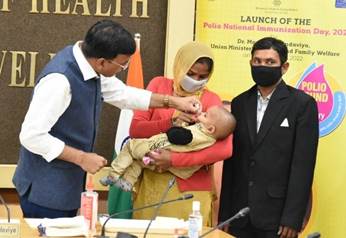Situation at a Glance
Description of the Situation
On 27 January 2024, the National Health Commission of the Peoples Republic of China notified WHO of one confirmed case of human coinfection with influenza A(H10N5) virus and seasonal influenza A(H3N2) virus. This is the first case of human infection with avian influenza A(H10N5) virus reported globally.
The case occurred in a female farmer over 60 years of age from Xuancheng Prefecture, Anhui Province, who had onset of symptoms of cough, sore throat and fever on 30 November 2023. The patient, who had a history of chronic comorbidities, was admitted to a local hospital on 2 December 2023 for treatment and was then transferred on 7 December 2023 to a medical institution in Zhejiang Province as her condition became more severe. The patient was diagnosed with influenza A virus infection. She passed away on 16 December 2023. Zhejiang Province health officials isolated seasonal influenza A(H3N2) subtype and avian influenza A(H10N5) subtype viruses from the patient’s samples on 22 January 2024 after nucleic acid testing, viral culture and gene sequencing conducted by local health care facilities.
On 26 January 2024, the Chinese Center for Disease Control and Prevention conducted confirmatory testing on the samples from Zhejiang Province and verified the laboratory results. It was noted that the patient had not been vaccinated for seasonal influenza.
The patient had exposure to live poultry through the purchase of a duck on 26 November 2023. From the duck meat stored in the fridge, seven samples tested positive for H10N5, and two samples were positive for N5 (no result for haemagglutinin). The patient had no contact with pigs or other mammals. Environmental samples were collected from her home, and all tested negative.
Medical observation of all close contacts in Zhejiang and Anhui provinces has found no additional suspected cases. Retrospective case finding activities also did not identify any other cases during the same period.
Epidemiology
Avian influenza infections are caused by influenza viruses which normally circulate in several types of wild and domestic birds but can also infect humans and other animal species. Infections in humans are usually sporadic and mostly due to direct contact with infected animals or contaminated environments. The primary risk factor for human infection appears to be exposure to either infected live or dead poultry or contaminated environments, such as live bird markets. Current zoonotic influenza viruses have not demonstrated sustained person-to-person transmission.
Avian influenza infections in humans can cause high fever, cough, sore throat, and muscle aches among other initial symptoms. Depending on the factors related to the virus and the infected host, the disease may quickly progress to severe lung infection (pneumonia), acute respiratory distress syndrome and even altered mental status or seizures.
Laboratory testing with reverse transcription polymerase chain reaction or other rapid molecular influenza assays (with similar high sensitivity and high specificity) are recommended when available. Prompt treatment based on antivirals and supportive care should be the priority. Through the Global Influenza Surveillance and Response System, WHO closely monitors avian and other zoonotic influenza viruses.
Public Health Response
The Chinese government has taken the following monitoring, prevention, and further control measures, including:
- Risk assessment.
- Enhanced syndromic surveillance in local healthcare facilities.
- Epidemiological investigation, close contact tracing, and monitoring.
- Retrospective screening, case finding, environmental sampling and testing.
Authorities expanded surveillance and testing among live poultry and the environment in farms and slaughterhouses in the city where the case lived in Xuancheng Prefecture, Anhui Province. No new suspected human cases have been detected through the field surveillance and testing done by authorities.
The agricultural authority has conducted culling and hazard management of the ducks which tested positive for H10N5 in a traceback investigation and has carried out disinfection of affected areas.
WHO Regional and Country Office are facilitating communications under the International Health Regulations (IHR 2005) regarding the public health response.
WHO Risk Assessment
Most human cases of infection with avian influenza viruses reported to date have been due to exposure to infected poultry or contaminated environments.
The first A(H10) subtype was isolated from chickens in Germany in 1949. Since then, A(H10) strains have occasionally been detected in wild waterfowl, domestic poultry, and mammals worldwide. As the A(H10) viruses are low pathogenic avian influenza viruses, it is not required to be reported to the World Organisation for Animal Health, and therefore, their true prevalence is unknown.
In 2008, avian influenza A(H10N5) was isolated from swine in Hubei, China; however, the current H10N5 infection in a human in China is the first human case of avian influenza A(H10N5) detected globally.
Due to limited data, further research is needed to determine the epidemiology of H10N5 viruses among animal populations to help inform surveillance efforts and preventive measures. Surveillance is important to monitor the spread of the virus, particularly in bird populations, considering the sporadic nature of human infections with other H10Nx subtypes such as H10N3.
Currently available epidemiologic information suggests that avian influenza A(H10Nx) viruses have not acquired the capacity for sustained transmission among humans. Thus, the likelihood of human-to-human spread is considered low. Should infected individuals from affected areas travel internationally, their infection may be detected in another country during travel or after arrival. If this were to occur, further community-level spread is considered unlikely.
WHO Advice
The public should avoid high-risk environments, such as live animal markets or farms, and avoid contact with live poultry or surfaces that might be contaminated by birds or poultry droppings. Hand hygiene with frequent handwashing or using alcohol-based hand sanitizer is recommended.
Due to the constantly evolving nature of influenza viruses, WHO continues to stress the importance of global surveillance to detect virological, epidemiological, and clinical changes associated with circulating influenza viruses that may affect human (or animal) health, and timely virus sharing for risk assessment.
All human infections caused by a new subtype of influenza virus are notifiable under the International Health Regulations (IHR, 2005). States Parties to the IHR (2005) are required to immediately notify WHO of any laboratory-confirmed case of a recent human infection caused by an influenza A virus with the potential to cause a pandemic. Evidence of illness is not required for this report.
WHO does not recommend any specific measures for travelers. WHO does not recommend any travel and/or trade restrictions toward China based on the currently available information.
Further Information
- WHO Avian and other zoonotic influenza
- WHO Monthly Risk Assessment Summary: Influenza at the human-animal interface
- WPRO Avian Influenza Weekly Update
- WHO Global influenza programme, human-animal interface
- WHO Protocol to investigate non-seasonal influenza and other emerging acute respiratory diseases
- Case definitions for the four diseases requiring notification in all circumstances under the International Health Regulations (2005)
- Complete genome sequence of an H10N5 avian influenza virus isolated from pigs in central China: https://journals.asm.org/doi/10.1128/jvi.02687-12
- Nicolas Bravo-Vasquez, Stacey Schultz-Cherry,Avian Influenza Viruses (Orthomyxoviridae), Encyclopedia of Virology (Fourth Edition) (2021), Academic Press, Pages 117-121, ISBN 9780128145166, https://doi.org/10.1016/B978-0-12-809633-8.20932-1 https://www.sciencedirect.com/science/article/pii/B9780128096338209321
Citable reference: World Health Organization (13 February 2024). Disease Outbreak News; Avian Influenza A(H10N5) and Influenza A(H3N2) coinfection – China. Available at https://www.who.int/emergencies/disease-outbreak-news/item/2023-DON504











